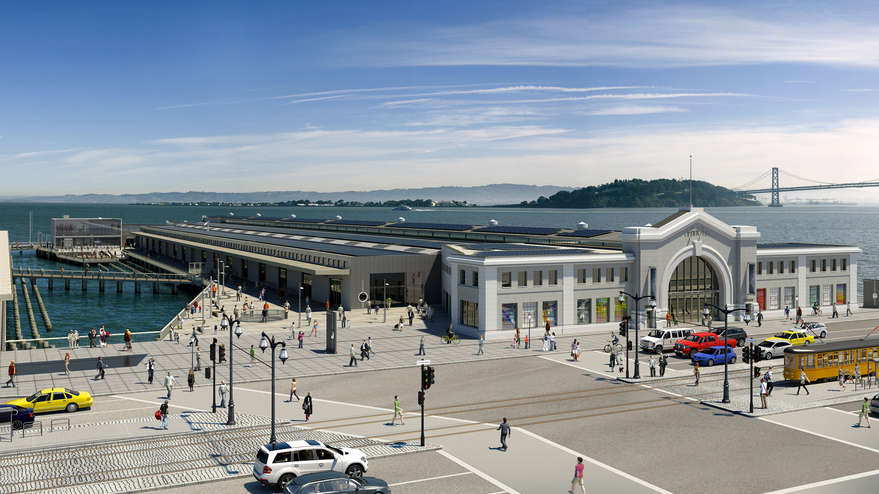
IF A TREE FALLS in the forest and no one is around to hear it, does it make a sound? That's one of life's existential questions. In the case of a 250-year-old coastal Douglas fir that was blown down in a West Marin forest 10 years ago, no one may have heard it fall, but a lot of people are going to see and experience it a decade later.
When the Exploratorium opens in its new home at San Francisco's Pier 15 on April 17, two halves of the majestic tree, a section of its trunk and its gigantic root system will be the showcase exhibit, working title "Tree Experience," in the new East Gallery, one of six galleries in the Exploratorium's new bayfront home.
The design team that created "Tree Experience" wanted something spectacular to greet visitors to the capacious East Gallery, an 8,000-square foot space that will focus on the life sciences.
When the magnificent old tree was discovered lying on a West Marin hillside, Marshall tree supplier Evan Shivley tipped off the exhibit team at the Exploratorium, knowing that it was the kind of sensational specimen they were looking for.
"I had envisioned what this exhibit would look like inside the museum," said installation artist Michael Brown, the lead designer. "We just needed to find the right tree."
Brown knew they'd found what they'd been looking for. And so did biologist Kristina Yu of San Anselmo, the gallery's curator.
"I live in Marin and I see big trees all the time," she said. "But when I encountered this tree, I said, 'Wow, that is life on a complex and grand scale.' This tree came from a couple of cells and hundreds of years later it's this enormous organism that's very sculptural and beautiful. Even as a jaded biologist, it gave me pause."
When the tree's various pieces are mounted on steel plates, the exhibit will weigh more than nine tons, and its Medusa-like tangle of roots will soar 13 feet above the gallery floor.
Visitors will be able to sit between the two sections of trunk on a bench made of the tree itself, a design aimed at creating an intimate, contemplative space.
"When you're between these two log halves, you'll feel as if you're sitting inside the tree, looking at the rings and the beautiful grain," Brown explained. "It will reveal things that you might not normally pay attention to."
Estimated to have once been more than 200 feet tall, the tree was knocked down by powerful winds on private land near Olema. Because of the angle of the slope it fell on, the tree's trunk, five feet in diameter, was elevated off the ground above a creek, preventing insects from crawling inside it and damaging the wood and beginning the process of decay.
For the Exploratorium team, the tree's enormous, lacy roots were its biggest selling point. They had what Brown describes as "dramatic punch."
"A root ball with arms that are reaching out to the sky was one of the dramatic things we were looking for," he said. "Once the exhibit's in place, we can talk about how these roots held that tree up for more than 200 years until some crazy wind storm knocked it down. It will be like a doorway to a larger story that we hope will inspire people, so that the next time they walk in the forest, they'll have a little more knowledge than if they had not had this experience at the Exploratorium."
Contact Paul Liberatore via email at liberatore@marinij.com ___
(c)2012 The Marin Independent Journal (Novato, Calif.)
Visit The Marin Independent Journal (Novato, Calif.) at www.marinij.com
Distributed by MCT Information Services
